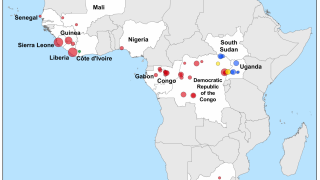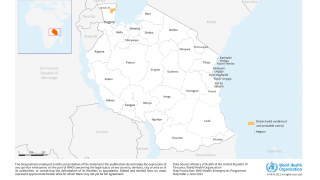Marburg Virus Outbreak Risk is Low at the Global Level

According to the latest Disease Outbreak News from the World Health Organization (WHO), there is a significant Marburg virus disease (MVD) outbreak in the Republic of Rwanda.
The recent notification of 26 confirmed MVD cases, of which over 70% are healthcare workers from two different health facilities in a city of over 1 million residents, is of great concern.
As of September 30, 2024, the WHO assessed the risk of this MVD outbreak as very high at the national level, high at the regional level, and low at the global level.
Furthermore, one close contact is known to have recently traveled internationally, and the WHO says appropriate response measures have been implemented.
Various health agencies are conducting ongoing investigations to determine the full extent of the outbreak. The WHO says the source of this MVD outbreak, geographical extent, likely onset date, and additional epidemiological information on cases are still pending further outbreak investigation.
There is a risk of this viral hemorrhagic fever disease outbreak spreading to neighboring countries since cases have been reported in districts located at the borders of the Democratic Republic of the Congo, the United Republic of Tanzania, and Uganda.
The risk of international spread is also high, as confirmed cases have been reported in the capital city, which has an international airport and road network to several cities in East Africa.
Since the initial spillover event in Germany in 1967, MVD has become a risk to numberious countries outside of Africa, such as Serbia and Yugoslavia.
This WHO risk assessment will be updated as more information is received.
Seperately, the U.S. CSC issued a Level 2 - Practice Enhanced Precautions, Travel Health Notice on September 30, 2024. If you travel to Rwanda, you should avoid contact with sick people with symptoms such as fever, muscle pain, and rash.
And avoid visiting healthcare facilities in the outbreak area for nonurgent medical care or non-medical reasons.
The CDC advises monitoring one's health for symptoms of Marburg while in the outbreak area and 21 days after leaving the outbreak area.
Marburg is spread by contact with the blood or body fluids of a person infected with or who has died from the virus. It is also spread by contact with contaminated objects (such as clothing, bedding, needles, and medical equipment) or with animals, such as bats and nonhuman primates, infected with the virus.
The WHO confirmed promising MVD vaccine and therapeutic candidates are conducting clinical trials as of October 2024.
Our Trust Standards: Medical Advisory Committee



